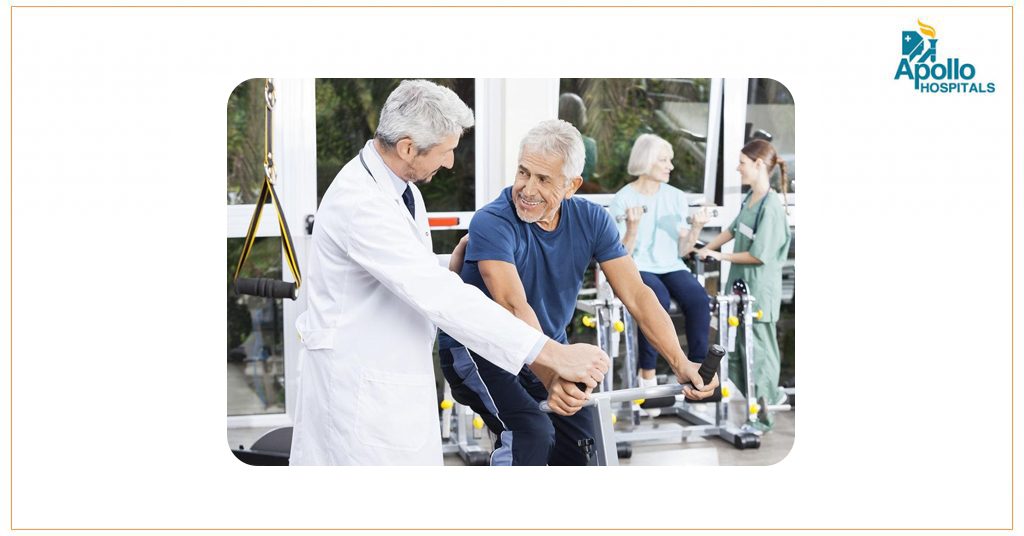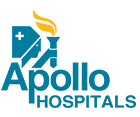Understanding the need for Cardiac Rehabilitation
- 2345 Views
- Apollo Hospital Mumbai
- September 15, 2020
- physiotherapy
Understanding the need for Cardiac Rehabilitation

Non-communicable diseases (NCDs), also known as chronic diseases are the result of a combination of genetic, physiological, environmental and behavioral factors. They are responsible for almost 71% of the total deaths globally today, with Cardiovascular Diseases (CVDs) accounting for the most NCD deaths followed by cancer, respiratory diseases and diabetes (WHO 2018). Any cardiac event caused due to a CVD is life changing and making heathy changes to one’s life can be difficult. It is therefore essential that support is extended beyond patients’ hospital admission to ensure optimization of physical, social and emotional recovery and Cardiac Rehabilitation is the important key to this.
Cardiac Rehabilitation dates back to the early 1900’s, where the concept evolved from observing simple bed rest for 6 weeks after acute coronary events to becoming a multidisciplinary approach (1950 by Hellerstein), to help cardiac patients recover faster and return to their optimal fitness level over a period of time. Today, itinvolves pre-operative education and counselling, post-operative patient care, optimization of medical treatment, lifestyle risk factor modification, nutritional counselling, smoking cessation, behavioral change and education, stress management, management of blood pressure, diabetes or dyslipidemia, individually tailored exercises protocol, cardio-protective therapies and long-term management with timely audit and evaluation.
Cardiovascular diseases (CVDs) have become the leading cause of mortality in India and a quarter of all mortality is attributable to CVD, with ischemic heart disease and stroke accounting for more than 80% of CVD deaths. These statistics point to the fact that Cardiac Rehabilitation is the need of the hour, to help survivors lead an optimally fit life. The aim is to reduce the risk of a future cardiac event by stabilizing, slowing, or even reversing the progression of cardiovascular disease or cardiac insult.
Patients with cardiovascular disease events such as myocardial infarction, percutaneous coronary intervention (PCI), bypass surgery, stable angina, heart transplant, heart valve surgery and heart failures (with exceptions) are the ones requiring Cardiac Rehabilitation. Occasionally, contraindications to this program only concern the exercise aspect while all other components can be pursued.
Traditionally Cardiac Rehabilitation is divided into 3 phases (some programmes may have 4 phases with phase 2 being considered as a subacute phase with light activity at home before beginning a formal supervised outpatient program) which aims to facilitate recovery and prevent future events.
Phase 1 or the in-patient phase is initiated right in the hospital after a Myocardial Infarction, cardiac event or surgery and extends as long as the patient stays in the hospitals. It involves the physiotherapist helping patient with monitored early progressive mobilization including bedside exercises to make self-care possible by discharge, with brief counselling about the nature of illness, treatment, risk factor management and follow up planning.
Phase 2 or the subacute phase starts immediately post discharge and usually extends for 2-4 weeks after percutaneous coronary intervention or Myocardial Infarction and 4 to 6 weeks after cardiac surgery. It focuses on health education and resumption of physical activity (light activity) at home and vary in format from center to center. Contact with the individual either through telephone follow up, home visits or individual /group education sessions are maintained facilitating ongoing education and exchange of information.
Phase 3 or the supervised outpatient program consists of a supervised program usually 2-4 weeks after percutaneous coronary intervention or Myocardial Infarction and 4 to 6 weeks after cardiac surgery in an outpatient setup and extends for 12 to 36 weeks. It aims to help patients return back to work or hobbies and lifestyle. During this period, the patient visits the outpatient clinic 2-3 times a week and exercises for 15 to 60 minutes depending on his condition under the supervision of the therapist. This exercise regime usually includes aerobic training, stretching/flexibility exercises and an introduction to strength training. At this stage, the physiotherapist works with the individual to monitor his/her response to exercise with parameters such as the heart rate, blood pressure, oxygen saturation, breathing rate, rate of perceived exertion and his ECG and also trains the individual to monitor his own heart rate and activity level. Certain outcome measures such as simple walk tests may be used pre and post phase 3 to evaluate the progress in the exercise capacity of the individual.
Phase 4, aims to move the individual towards more intense independent physical activity and lifetime maintenance with prime focus on physical fitness and additional risk factor reduction. Here, the physiotherapist expects the individual to monitor his own response to exercise including heart rate and perceived exertion. Home or gymnasium exercise program are encouraged with the aim of continuing risk factor modification and exercise program learned during phase 3. Cardiac Rehabilitation has numerous benefits such as mortality and morbidity reduction from exercise-based program, improvement in life quality by improving symptoms such as lessening of chest pain, dyspnea, fatigue, stress and enhancement of overall sense of psycho-social well-being. It is not only clinically effective but also cost effective when compared to lipid lowering medications, thrombolytic and bypass surgery.
- January 20, 2025
Total Knee Replacement: The Role of Robotics
- January 20, 2025
Awareness and Precautions Against Human Metapneumovirus (HMPV)
- January 20, 2025
Aortic Root Replacement
- December 26, 2024
Robotic Surgery in Orthopedics
- Bone Marrow Transplant3
- Cardiac sciences44
- Cardiology1
- Child Care7
- Clinical Excellence33
- Cosmetology2
- COVID-199
- Diseases4
- Emergency10
- Emergency8
- Endocrinology1
- ENT5
- Fetal Medicine1
- Gastroenterology8
- General Medicine11
- General Surgery4
- Genomic Medicine2
- Gynecology1
- Health14
- Hematology2
- Kidney Transplant5
- Kidney Transplant2
- Liver Transplant6
- Neonatology1
- Nephrology2
- Nephrology & transplant1
- Nephrology & Urology4
- Neurosciences21
- Neurosciences1
- Nutrition/Diet1
- Obstetrics & Gynecology9
- Obstetrics & Gynecology4
- Oncology3
- Oncology93
- Ophthalmology1
- Orthopedic15
- Patient Speak1
- Pediatric Surgery4
- physiotherapy2
- Psychologist2
- Pulmonology4
- Rheumatology1
- Robotic Suregry1
- Robotic Surgery11
- Spine1
- Uncategorized111
- Urology1
- Women Care5
